Abstract
1 Responses of isolated ductus arteriosus preparations from near term guinea-pigs and lambs to transmural electrical stimulation and drugs were studied in a low oxygen medium (Po2 19 to 28 mmHg).
2 Acetylcholine and noradrenaline contracted both vessels in a dose-dependent manner, their threshold being between 10-8 and 10-7 M. Transmural stimulation (pulse width 0.2 to 0.6 ms, typically 20 Hz) also contracted the vessels.
3 Atropine and phentolamine or dibenzyline selectively blocked responses to acetylcholine and noradrenaline, respectively.
4 In the guinea-pig ductus, part of the response to transmural stimulation was due to activation of intrinsic adrenergic nerves since the responses were reduced by α-adrenoceptor antagonists, bretylium or prior reserpine treatment, but not by atropine. The response of the lamp ductus to transmural stimulation varied greatly in magnitude and was inconsistently affected by α-adrenoceptor blocking drugs.
5 There was no evidence that transmural stimulation activated cholinergic nerves in either species.
6 After inactivation of α-adrenoceptors with dibenzyline, noradrenaline caused a β-adrenoceptor-mediated relaxation. Both this effect and isoprenaline-mediated relaxation were blocked by propranolol. β-Adrenoceptor activity was more prominent in the ductus of the guinea-pig than of the lamb.
7 Raising the Po2 from 19-28 to 92-98 mmHg increased the response of the guinea-pig ductus to transmural stimulation suggesting that, in this species, physiological elevation of oxygen tension at birth may increase transmitter release from intrinsic adrenergic nerves. Whether this mechanism would contribute to ductus closure remains an open question.
8 We postulate that β-adrenoceptor-mediated relaxation has a role in maintaining ductus patency in the guinea-pig foetus.
Full text
PDF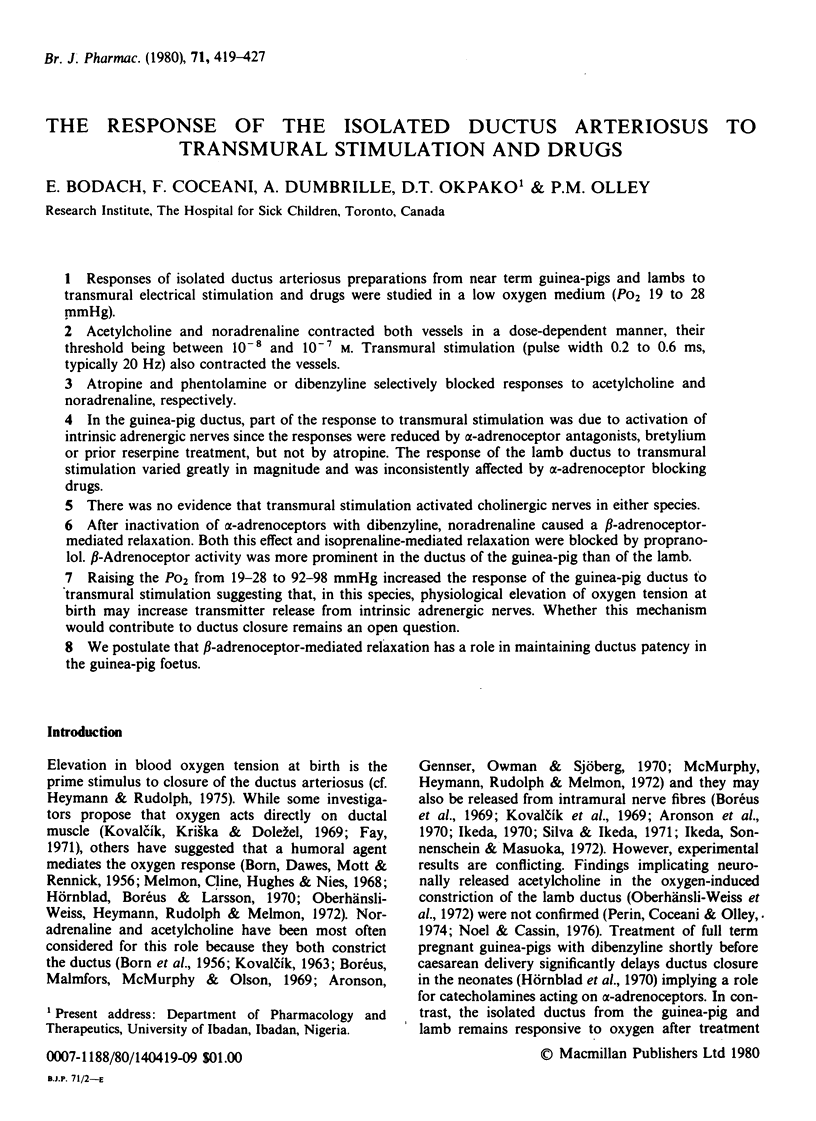
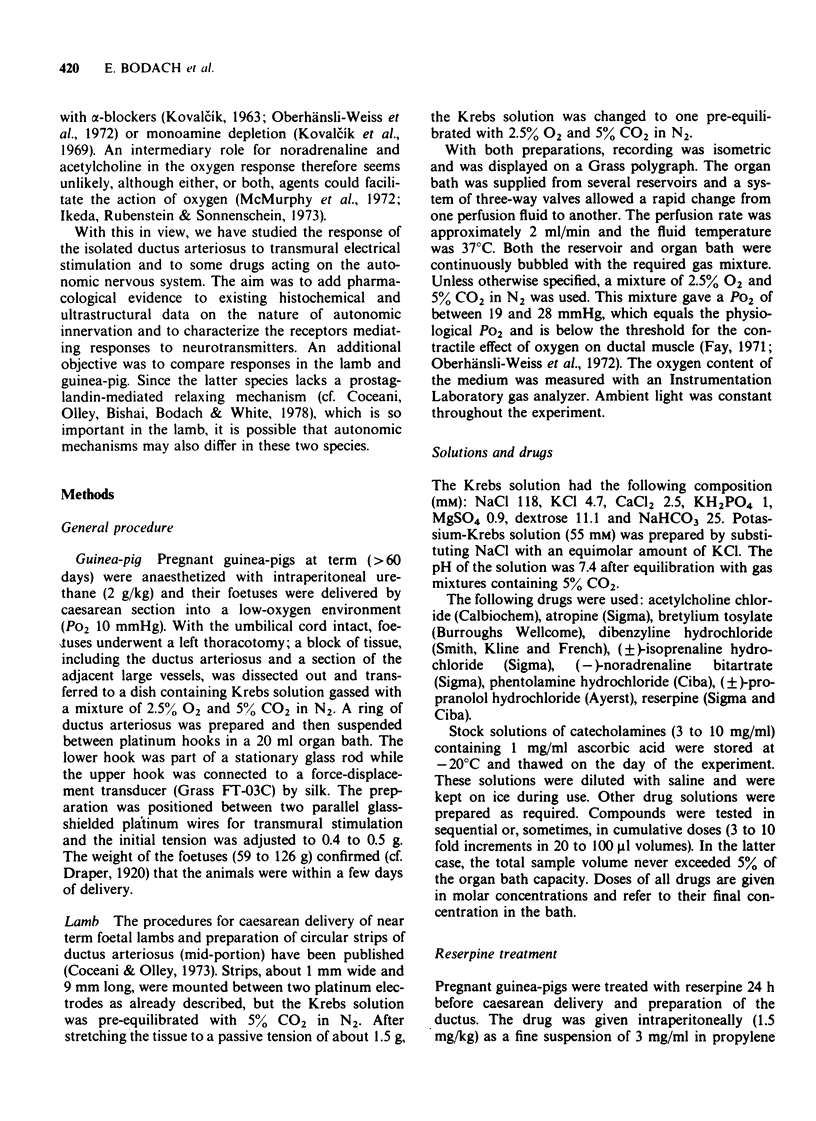
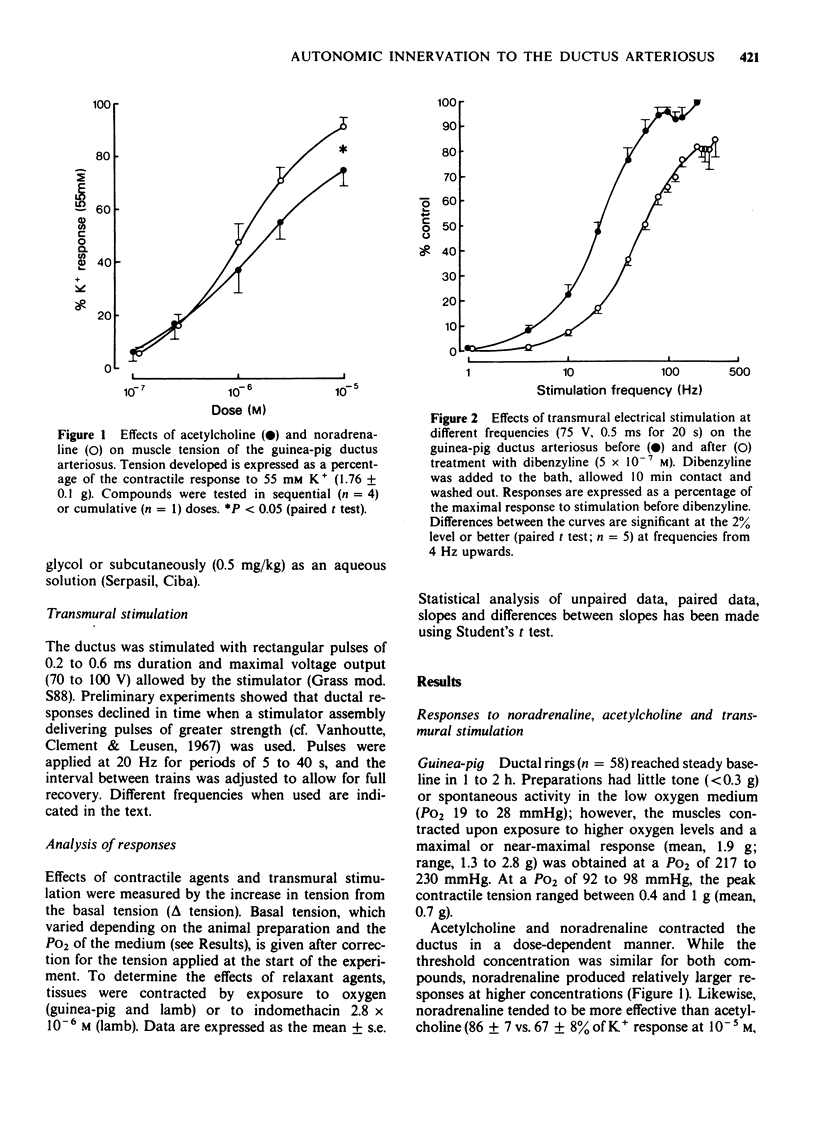
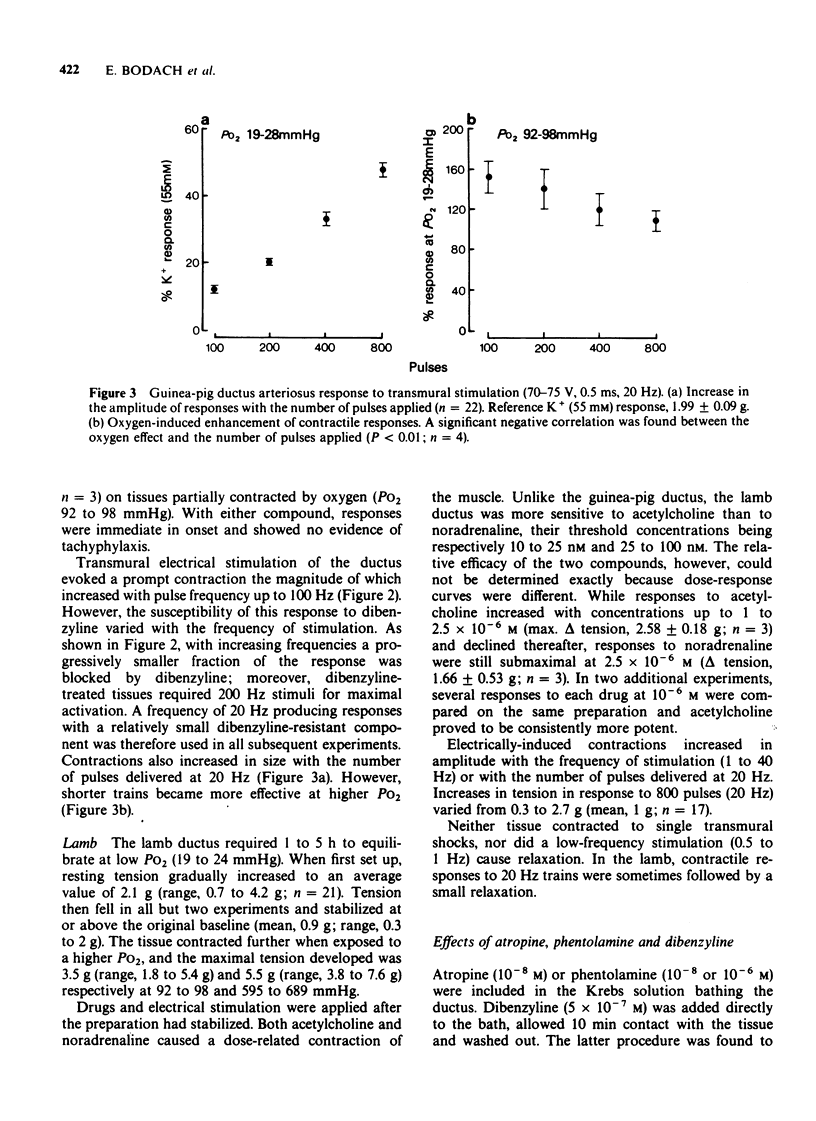
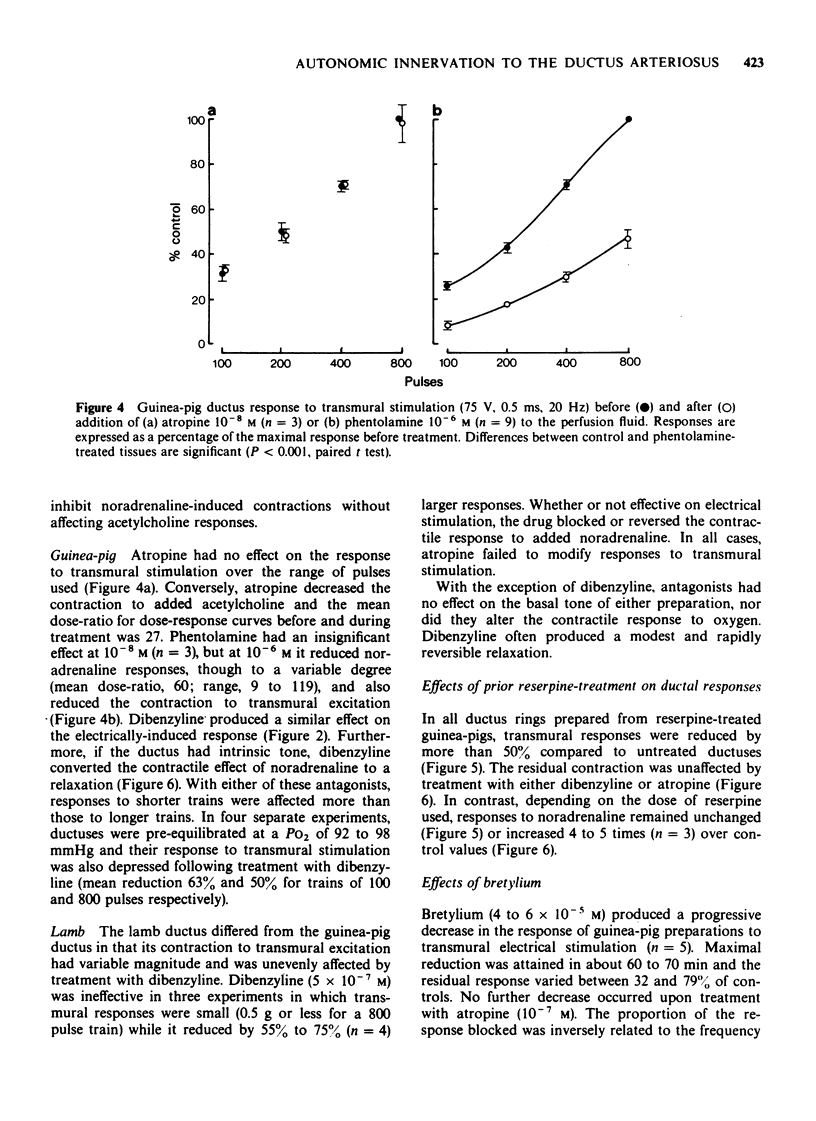
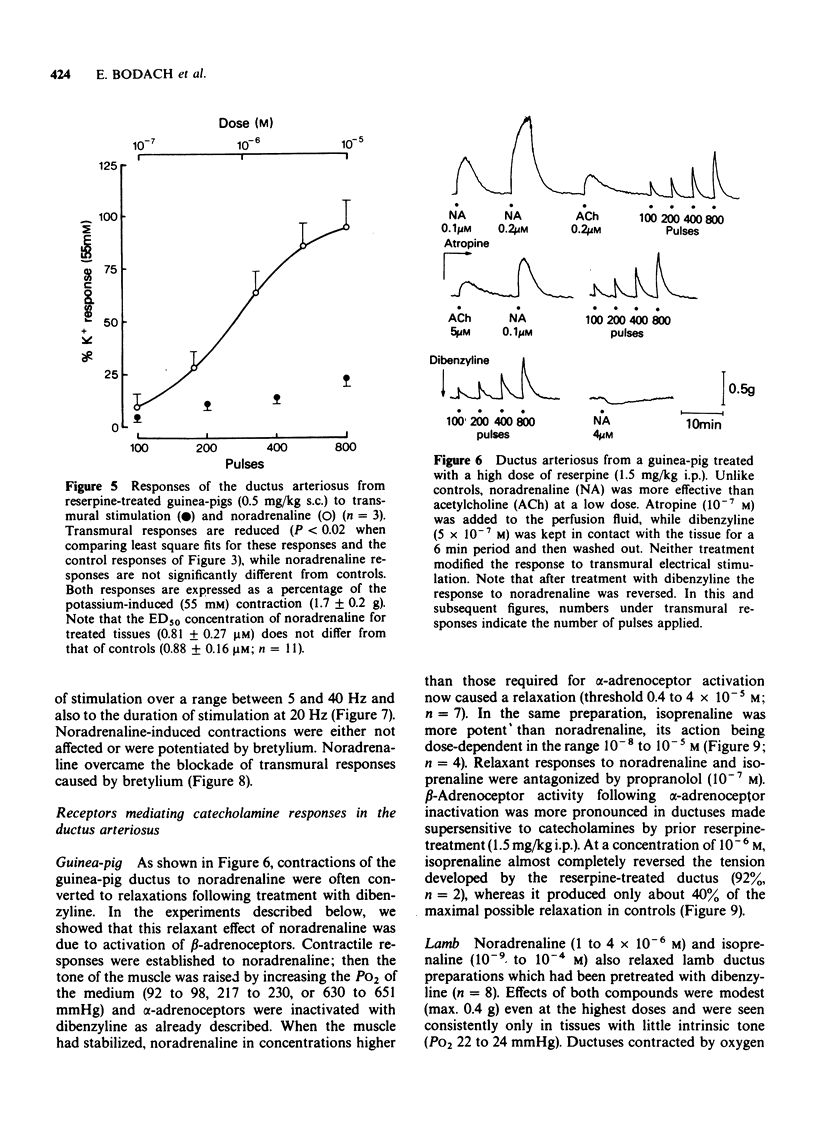
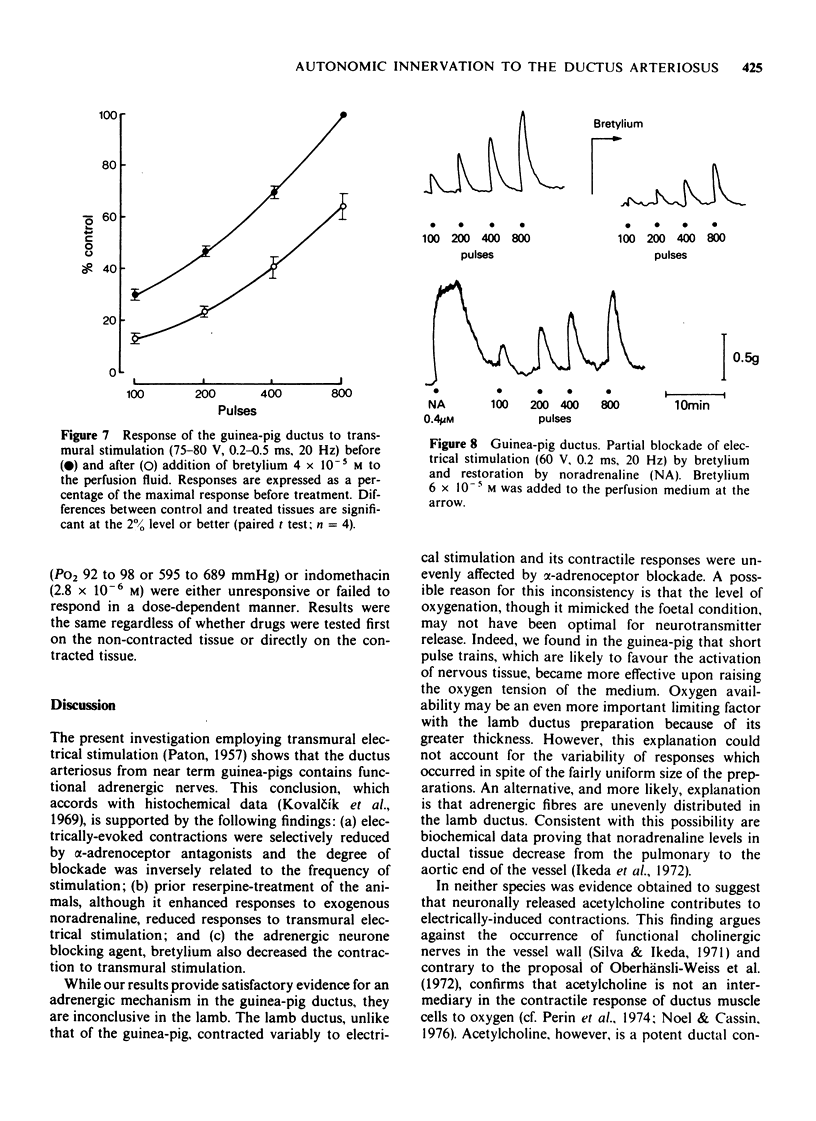
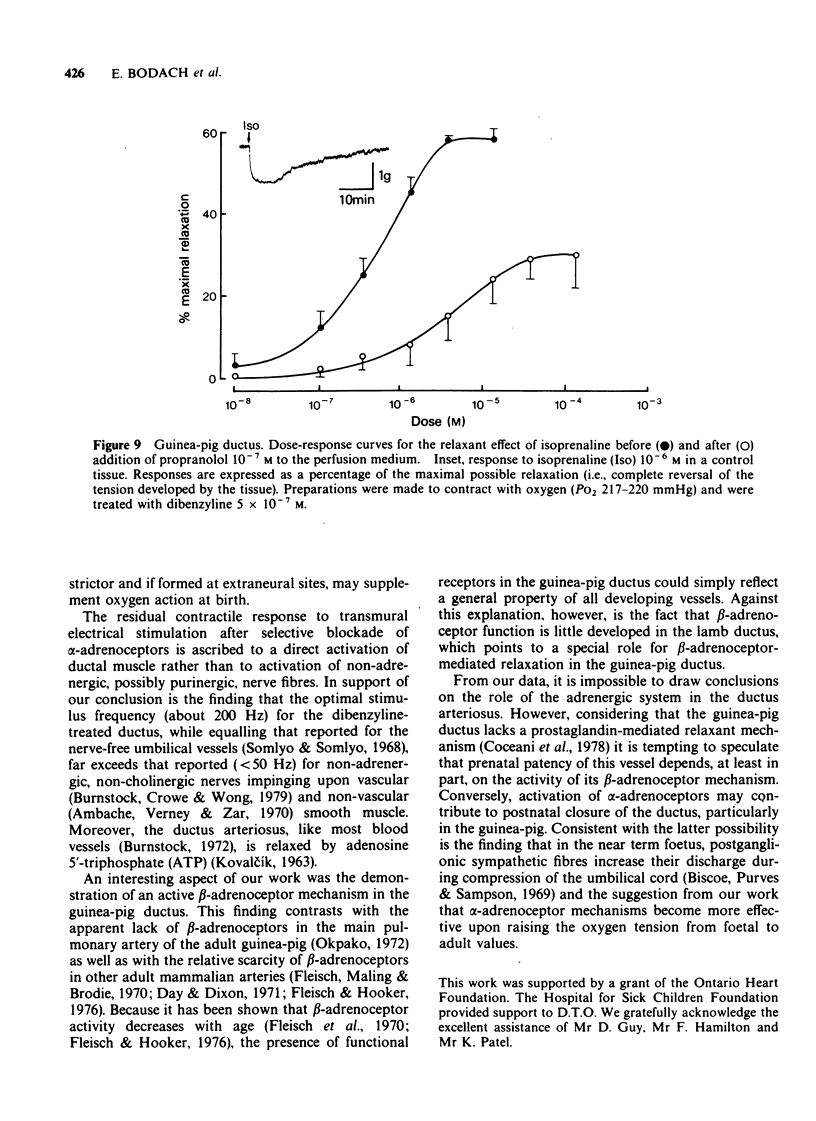
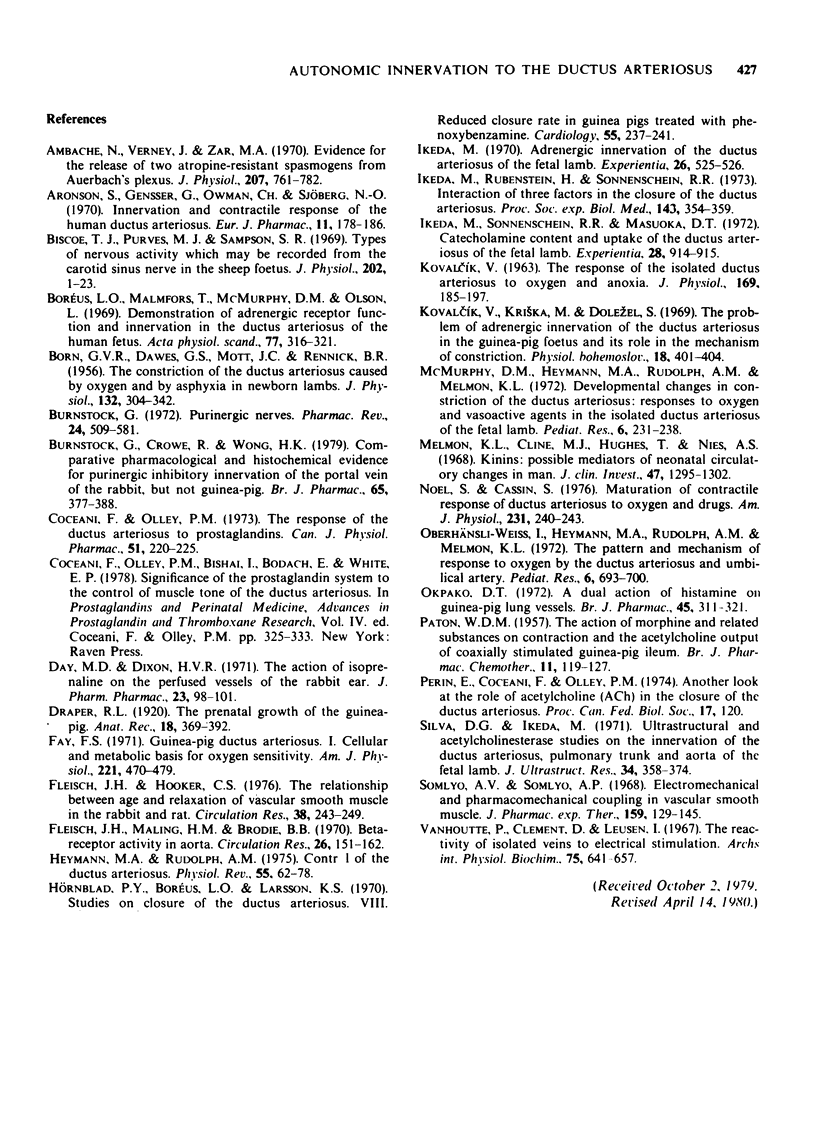
Selected References
These references are in PubMed. This may not be the complete list of references from this article.
- Ambache N., Verney J., Zar M. A. Evidence for the release of two atropine-resistant spasmogens from Auerbach's plexus. J Physiol. 1970 May;207(3):761–782. doi: 10.1113/jphysiol.1970.sp009093. [DOI] [PMC free article] [PubMed] [Google Scholar]
- Aronson S., Gennser G., Owman C., Sjöberg N. O. Innervation and contractile response of the human ductus arteriosus. Eur J Pharmacol. 1970 Jul 15;11(2):178–186. doi: 10.1016/0014-2999(70)90047-6. [DOI] [PubMed] [Google Scholar]
- BORN G. V., DAWES G. S., MOTT J. C., RENNICK B. R. The constriction of the ductus arteriosus caused by oxygen and by asphyxia in newborn lambs. J Physiol. 1956 May 28;132(2):304–342. doi: 10.1113/jphysiol.1956.sp005526. [DOI] [PMC free article] [PubMed] [Google Scholar]
- Biscoe T. J., Purves M. J., Sampson S. R. Types of nervous activity which may be recorded from the carotid sinus nerve in the sheep foetus. J Physiol. 1969 May;202(1):1–23. doi: 10.1113/jphysiol.1969.sp008792. [DOI] [PMC free article] [PubMed] [Google Scholar]
- Boréus L. O., Malmfors T., McMurphy D. M., Olson L. Demonstration of adrenergic receptor function and innervation in the ductus arteriosus of the human fetus. Acta Physiol Scand. 1969 Nov;77(3):316–321. doi: 10.1111/j.1748-1716.1969.tb04576.x. [DOI] [PubMed] [Google Scholar]
- Burnstock G., Crowe R., Wong H. K. Comparative pharmacological and histochemical evidence for purinergic inhibitory innervation of the portal vein of the rabbit, but not guinea-pig. Br J Pharmacol. 1979 Mar;65(3):377–388. doi: 10.1111/j.1476-5381.1979.tb07841.x. [DOI] [PMC free article] [PubMed] [Google Scholar]
- Burnstock G. Purinergic nerves. Pharmacol Rev. 1972 Sep;24(3):509–581. [PubMed] [Google Scholar]
- Coceani F., Olley P. M. The response of the ductus arteriosus to prostaglandins. Can J Physiol Pharmacol. 1973 Mar;51(3):220–225. doi: 10.1139/y73-031. [DOI] [PubMed] [Google Scholar]
- Day M. D., Dixon H. V. The action of isoprenaline on the perfused vessels of the rabbit ear. J Pharm Pharmacol. 1971 Feb;23(2):98–101. doi: 10.1111/j.2042-7158.1971.tb08619.x. [DOI] [PubMed] [Google Scholar]
- Fay F. S. Guinea pig ductus arteriosus. I. Cellular and metabolic basis for oxygen sensitivity. Am J Physiol. 1971 Aug;221(2):470–479. doi: 10.1152/ajplegacy.1971.221.2.470. [DOI] [PubMed] [Google Scholar]
- Fleisch J. H., Hooker C. S. The relationship between age and relaxation of vascular smooth muscle in the rabbit and rat. Circ Res. 1976 Apr;38(4):243–249. doi: 10.1161/01.res.38.4.243. [DOI] [PubMed] [Google Scholar]
- Fleisch J. H., Maling H. M., Brodie B. B. Beta-receptor activity in aorta; variations with age and species. Circ Res. 1970 Feb;26(2):151–162. doi: 10.1161/01.res.26.2.151. [DOI] [PubMed] [Google Scholar]
- Heymann M. A., Rudolph A. M. Control of the ductus arteriosus. Physiol Rev. 1975 Jan;55(1):62–78. doi: 10.1152/physrev.1975.55.1.62. [DOI] [PubMed] [Google Scholar]
- Hörnblad P. Y., Boréus L. O., Larsson K. S. Studies on closure of the ductus arteriosus. 8. Reduced closure rate in guinea pigs treated with phenoxybenzamine. Cardiology. 1970;55(4):237–241. doi: 10.1159/000169286. [DOI] [PubMed] [Google Scholar]
- Ikeda M. Adrenergic innervation of the ductus arteriosus of the fetal lamb. Experientia. 1970 May 15;26(5):525–526. doi: 10.1007/BF01898488. [DOI] [PubMed] [Google Scholar]
- Ikeda M., Rubinstein E. H., Sonnenschein R. R. Interaction of three factors in the closure of the ductus arteriosus. Proc Soc Exp Biol Med. 1973 Jun;143(2):354–359. doi: 10.3181/00379727-143-37319. [DOI] [PubMed] [Google Scholar]
- Ikeda M., Sonnenschein R. R., Masuoka D. T. Catecholamine content and uptake of the ductus arteriosus of the fetal lamb. Experientia. 1972 Aug 15;28(8):914–915. doi: 10.1007/BF01924942. [DOI] [PubMed] [Google Scholar]
- McMurphy D. M., Heymann M. A., Rudolph A. M., Melmon K. L. Developmental changes in constriction of the ductus arteriosus: responses to oxygen and vasoactive agents in the isolated ductus arteriosus of the fetal lamb. Pediatr Res. 1972 Apr;6(4):231–238. doi: 10.1203/00006450-197204000-00004. [DOI] [PubMed] [Google Scholar]
- Melmon K. L., Cline M. J., Hughes T., Nies A. S. Kinins: possible mediators of neonatal circulatory changes in man. J Clin Invest. 1968 Jun;47(6):1295–1302. doi: 10.1172/JCI105821. [DOI] [PMC free article] [PubMed] [Google Scholar]
- Noel S., Cassin S. Maturation of contractile response of ductus arteriosus to oxygen and drugs. Am J Physiol. 1976 Jul;231(1):240–243. doi: 10.1152/ajplegacy.1976.231.1.240. [DOI] [PubMed] [Google Scholar]
- Oberhänsli-Weiss I., Heymann M. A., Rudolph A. M., Melmon K. L. The pattern and mechanisms of response to oxygen by the ductus arteriosus and umbilical artery. Pediatr Res. 1972 Sep;6(9):693–700. doi: 10.1203/00006450-197209000-00001. [DOI] [PubMed] [Google Scholar]
- Okpako D. T. A dual action of histamine on guinea-pig lung vessels. Br J Pharmacol. 1972 Jun;45(2):311–321. doi: 10.1111/j.1476-5381.1972.tb08085.x. [DOI] [PMC free article] [PubMed] [Google Scholar]
- PATON W. D. The action of morphine and related substances on contraction and on acetylcholine output of coaxially stimulated guinea-pig ileum. Br J Pharmacol Chemother. 1957 Mar;12(1):119–127. doi: 10.1111/j.1476-5381.1957.tb01373.x. [DOI] [PMC free article] [PubMed] [Google Scholar]
- Silva D. G., Ikeda M. Ultrastructural and acetylcholinesterase studies on the innervation of the ductus arteriosus, pulmonary trunk and aorta of the fetal lamb. J Ultrastruct Res. 1971 Feb;34(3):358–374. doi: 10.1016/s0022-5320(71)80078-3. [DOI] [PubMed] [Google Scholar]
- Somlyo A. V., Somlyo A. P. Electromechanical and pharmacomechanical coupling in vascular smooth muscle. J Pharmacol Exp Ther. 1968 Jan;159(1):129–145. [PubMed] [Google Scholar]
- Vanhoutte P., Clement D., Leusen I. The reactivity of isolated veins to electrical stimulation. Arch Int Physiol Biochim. 1967 Sep;75(4):641–657. doi: 10.3109/13813456709112513. [DOI] [PubMed] [Google Scholar]


